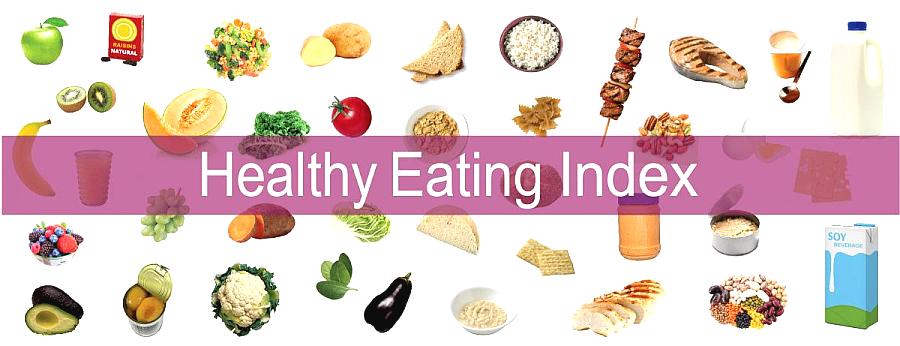

The HEI-2020 and the new HEI-Toddlers-2020 can be used to see how well the diets of the U.S. population align with the dietary patterns and key recommendations published in the Dietary Guidelines for Americans, 2020-2025. The density scoring allows researchers to apply the HEI-2020 and the HEI-Toddlers-2020 in a variety of research settings and a variety of calorie intake levels. The density approach is described on the How the HEI Is Scored page.
Examples of various HEI applications published in scientific papers and federal reports are highlighted in the Journal of the Academy of Nutrition and Dietetics as a CNPP Corner article titled Healthy Eating Index-Beyond the Score. The CNPP Corner article provides additional information about how researchers use the HEI to study diet quality. The HEI-Toddlers-2020 can be used in similar studies interested in diet quality for young children ages 12 through 23 months.
Here is a closer look at the many ways that the HEI can be used to study diet quality. The examples mainly refer to uses of the HEI intended for populations ages 2 and older, however we anticipate these examples will grow with the introduction of the HEI-Toddlers-2020.
Monitor Diet Quality of the U.S. Population
The HEI is used to assess how well diets in the United States align with the Dietary Guidelines for Americans (Dietary Guidelines). CNPP uses the Healthy Eating Index (HEI) to provide a data-driven understanding of diet quality in the United States over time. The HEI Scores for Americans page illustrates HEI-2020 scores for specific subgroups of the population across the life span from young children ages 12 through 23 months through older adults.
Study Associations Between Diet Quality and Health Outcomes
The HEI can be used to study whether diets that are associated with higher HEI scores may improve health outcomes. Health outcomes that have been studied include diet-related chronic diseases across all life stages, such as cardiovascular disease, overweight and obesity, cancer, type 2 diabetes, bone health, neurocognitive health, and risk of death from all causes. These studies show that each step closer to a diet that aligns with the key recommendations of the Dietary Guidelines (as measured by the HEI) may help reduce the risk of these diseases among the populations studied. You can find details on the relationship between dietary patterns and health outcomes here.
Evaluate Federal Nutrition Programs
The HEI can be used to determine diet quality of foods made available through federal nutrition programs, such as the foods offered through the United States Department of Agriculture (USDA) Food Distribution Program on Indian Reservations. Other evaluations provide HEI scores for participants in federal nutrition programs such as the Supplemental Nutrition Assistance Program and the National School Lunch Program. The USDA Food and Nutrition Service Report Finder allows you to search for reports related to federal nutrition programs and services offered by the USDA.
Examine the Food Supply
The HEI also can be used to evaluate diet quality in a variety of food settings, from foods available in the U.S. food supply, to restaurant menus, as well as foods purchased and sold at other institutions. This information can help to evaluate how well the mix of foods made available to consumers aligns with dietary recommendations.
Adapt to Global Settings
The components in the HEI reflect basic food groups that can be applied to any culture. While intended to reflect dietary guidance in the United States, the HEI can be a useful tool for assessing diet quality in countries that may not have their own index, or in instances where there is a desire to compare associations between a predetermined definition of diet quality and health outcomes. The HEI, or an adapted version, has been used to assess diet quality in many countries other than the United States. These countries include Brazil, Iran, China, Greece, Italy, Spain, Belgium, Sweden, France, and Malaysia.

